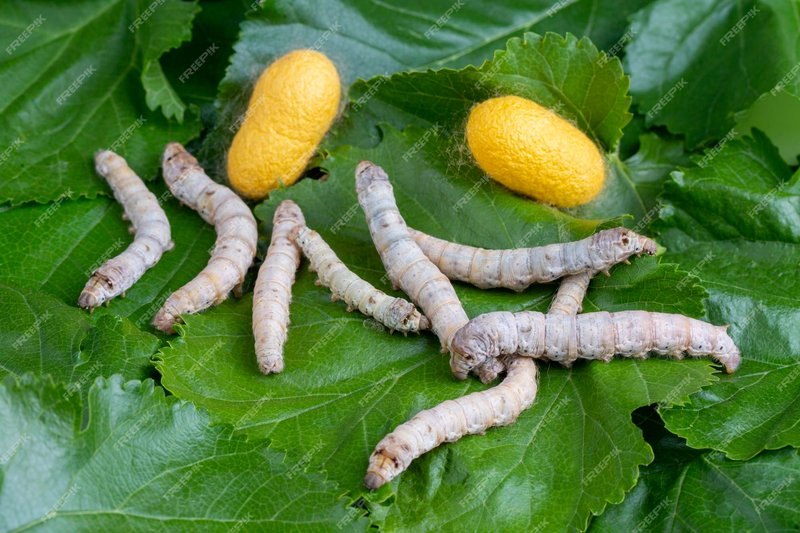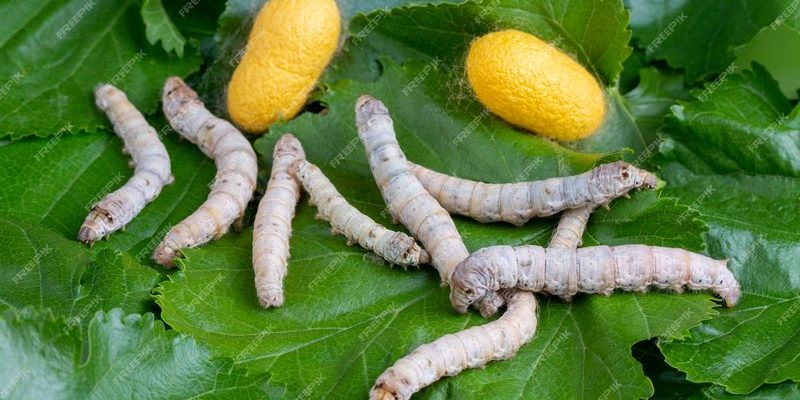
So, grab your cup of coffee, and let’s dive into the world of silkworms. You might be surprised at how much there is to learn about this little critter that plays a big role in producing silk!
The Silkworm Egg: Starting the Journey
The lifecycle of a silkworm begins with the **egg** stage. A female moth lays hundreds of eggs, which are about the size of a pinhead. These eggs are usually laid on mulberry leaves, as that’s the favorite food of the baby silkworms, known as silkworm larvae or caterpillars. The eggs are often laid in clusters and can be pale yellow or white.
Here’s the thing: the timing of this stage is crucial. The eggs are sensitive to temperature. If they’re kept at the right environment, in about 10 days, tiny larvae will emerge. If you’re thinking about raising silkworms yourself, keeping the humidity and temperature just right is essential for a successful hatch.
Once the little silkworms break free from their eggs, they’re incredibly hungry and ready to munch on leaves. This is where the fun begins!
Silkworm Larvae: The Hungry Caterpillar Phase
After the eggs hatch, the silkworms enter the **larval stage**. These active little creatures are primarily focused on eating. They spend most of their time feasting on **mulberry leaves** to grow big and strong. It’s fascinating to watch them munch away, and they can eat a whopping 20,000 times their body weight during this stage!
As they grow, they’ll shed their skin several times—a process called molting. This happens about four to five times, and each time, they get a little larger and more ready for the next stage. You might be wondering why they need to shed their skin. Well, as they grow, they outgrow their old skin, and it’s essential for them to have room to expand. Each time they molt, they become even hungrier and more voracious.
During this larval phase, they also produce a silk thread from their salivary glands, but they won’t use it just yet. Instead, it’s all about eating and growing until they reach their full size.
The Cocoon: Transition to Moth
After a few weeks of munching and growing, the silkworms are ready for a significant change. They find a safe spot and start spinning a **cocoon** around themselves. This is where they’ll take a big leap from caterpillar to moth. The spinning process can take about three to eight days, and during that time, they create a protective case made of silk.
Once inside the cocoon, the silkworm is now in the **pupal stage**. This is a fascinating time; their bodies are actually breaking down and rebuilding into a moth. Remember that silk thread they were making while eating? Now it’s put to good use. The cocoon is made up of a single long thread of silk, which can be several hundred meters long!
You might be surprised to learn that during this stage, the silkworm is completely vulnerable. It’s as if they’re in a deep sleep, completely transforming into something new. It can take anywhere from a week to several weeks before they emerge as fully grown moths, depending on their environment.
The Emergence: The Silkmoth
Finally, the moment arrives when the silkworm emerges as a **silkmoth**. They break free from their cocoon and are initially soft and fluffy. It’s almost like watching a butterfly emerge, but the silkmoth doesn’t have the same colorful wings. Instead, they are mostly white or cream-colored, and, unlike many moths, they don’t have the ability to fly immediately.
In their first few hours, silkmoths pump fluid into their wings to help them expand and become strong enough to fly. But here’s the catch: male silkmoths can mate only shortly after emerging, while females release pheromones to attract males. The whole process of reproduction can happen quickly, often within a few days of their emergence.
This stage lasts only a few weeks, during which the moths focus on reproduction and survival. After laying eggs, the cycle begins anew. Isn’t it amazing how life keeps moving forward?
Why the Silkworm Lifecycle Matters
Understanding the **silkworm lifecycle** isn’t just for biology enthusiasts. It’s crucial for the silk industry as well. Silkworms have been domesticated for thousands of years, and their lifecycle impacts how silk is produced. Farmers rely on the timing and health of these creatures to ensure high-quality silk production.
Additionally, with the rise of sustainable practices, there’s growing interest in promoting silkworm farming as a more eco-friendly choice. Unlike synthetic fabrics, silk is biodegradable and can be produced with less environmental impact when done responsibly.
Moreover, knowing about the silkworm lifecycle can be fascinating if you’re thinking about starting your silk farm or simply want to appreciate the beauty of silk products. This lifecycle showcases the remarkable journey of a creature that affects so many of our daily lives in ways we might not realize.
The **silkworm lifecycle** is a perfect example of nature’s incredible ability to transform. From a tiny egg to a shimmering silk moth, each stage plays an important role in creating something beautiful and valuable. Whether you’re a curious beginner or just someone who appreciates the artistry of silk, taking the time to understand this lifecycle is worthwhile.
So the next time you see a silk scarf or a beautiful silk dress, remember the journey it took to get there. From the humble beginnings of a silkworm egg to the delicate weaving of silk threads, every part of this lifecycle is a reminder of the wonders of nature. Isn’t it amazing how something so simple can create such beauty?

